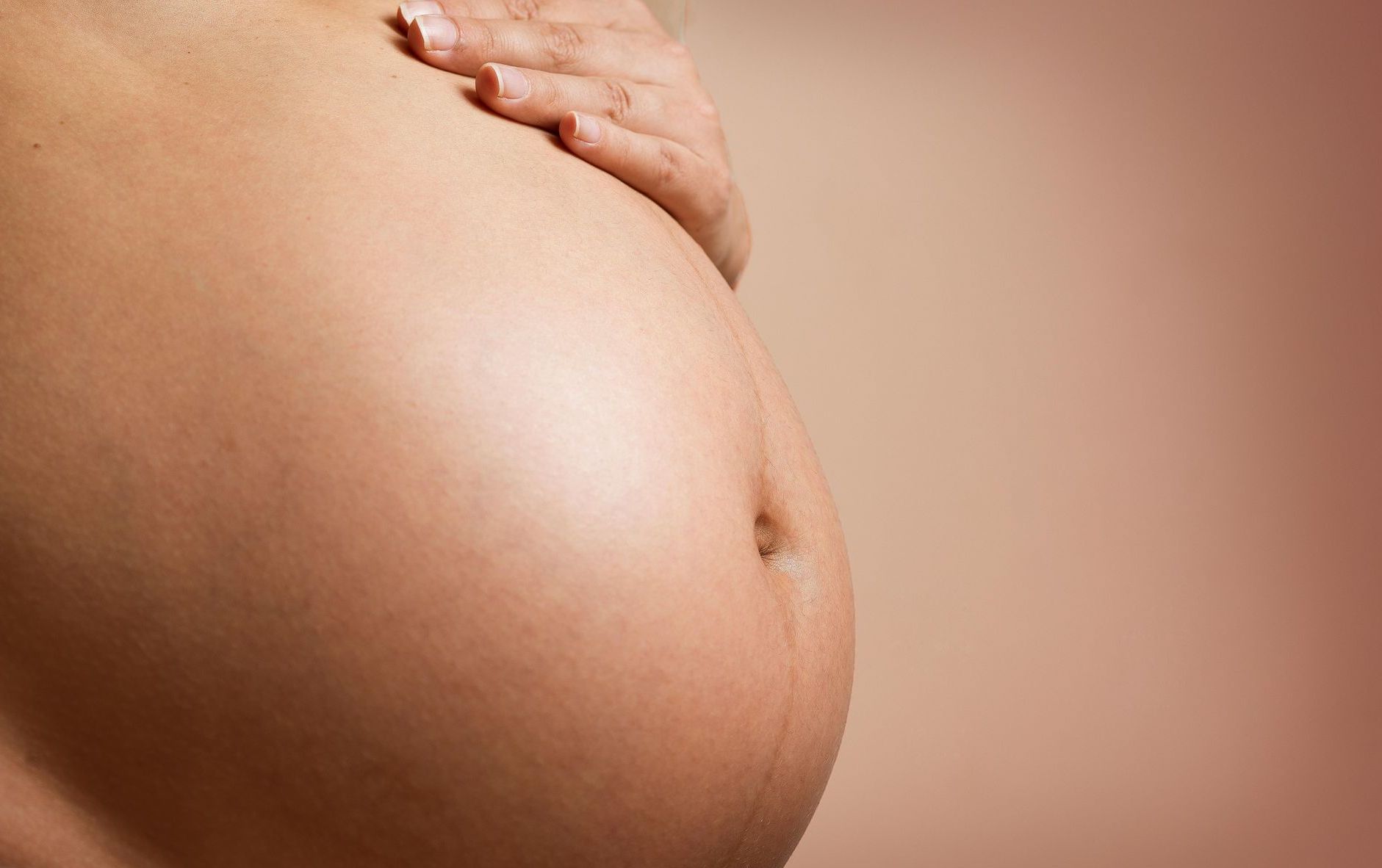Women with endometriosis are known to have substantially higher pregnancy and postpartum complications, yet many are unaware of the hidden danger.

Endometriosis is a chronic inflammatory condition, affecting at least 1 in 10 women worldwide. Debilitating pain and heavy menstrual flow are commonly associated symptoms. However, an even more important consequence of this condition is the increased risk of pregnancy complications.
Pregnant women with undiagnosed or asymptomatic endometriosis often show little to no warning signs of the condition until serious complications develop. Without a Tier 1 noninvasive tool to detect endometriosis early, they may not be able to take the preventative steps necessary to protect themselves or their unborn child.
Fortunately, this paradigm has shifted with the introduction of the only Tier 1 noninvasive, 30-minute, highly accurate diagnostic tool, the ENDOSURE TEST.
The Alarming Connection Between Endometriosis and Pregnancy Complications
In 2015, a BBC News article highlighted a groundbreaking study conducted on nearly 15,000 women in Scotland. The study shed light on the significant risks endometriosis poses during pregnancy.
The research revealed women with endometriosis have a 76% greater chance of miscarriage, 26% higher risk of premature birth, and a 40% greater likelihood of requiring a cesarean section (C-section) compared to women without the disease. [1]
Women with endometriosis have a 76% greater chance of miscarriage, 26% higher risk of premature birth, and a 40% greater likelihood of requiring a cesarean section (C-section).
More recently, research published in 2023 and 2024 also found that women with endometriosis are at a greater risk of developing preeclampsia, a life-threatening pregnancy complication characterized by high blood pressure and potential organ damage. [2,3]
Preeclampsia accounts for 2% to 8% of all pregnancy-related complications worldwide, contributing to over 50,000 maternal deaths and more than 500,000 fetal deaths annually. [4] These staggering numbers stress the urgent need to increase awareness of the risk of preeclampsia in women with endometriosis.
Even more so, these studies highlight the critical need for diagnostic tools that can detect endometriosis in women who do not know they have the disease.
The Challenge of Asymptomatic Endometriosis
One of the greatest obstacles in addressing the risk of pregnancy complications is the prevalence of asymptomatic endometriosis, often referred to as “silent endometriosis.”
Silent endometriosis presents little to no noticeable symptoms. Yet, it can contribute to the same pregnancy risks as symptomatic cases. The absence of telltale signs like chronic pelvic pain or irregular periods means it often remains undiagnosed until pregnancy complications occur, or fertility challenges come to light.
This is why early diagnosis is so important. It can give women the advantage of time. An early diagnosis gives women the opportunity to make informed decisions about their reproductive health and reduce the risk of pregnancy complications through proactive, targeted care.
How Diagnostic Testing for Endo Can Help Prevent Pregnancy Complications
With the introduction of the ENDOSURE TEST in 2022 as the first Tier 1 diagnostic test for endometriosis equips medical providers with the means to detect endometriosis at any stage and any location in the body – even in asymptomatic cases – in just 30 minutes.
An early diagnosis gives women the opportunity to make informed decisions about their reproductive health and reduce the risk of pregnancy complications.
Through the TEST, every woman, regardless of age, disease location, or pregnancy status, is offered the opportunity to collaborate with her provider about the necessary steps to protect her health and that of her unborn child from the potentially devastating consequences of undiagnosed endometriosis.
Raising Awareness: A Call to Action
The increased risks of pregnancy complications in women with endometriosis cannot be understated. The disease’s impact on miscarriage, preterm birth, C-sections, and preeclampsia highlights the urgent need for greater awareness, earlier detection, and improved medical interventions.
Women of reproductive age, particularly those planning to conceive, should be educated about the potential risks of endometriosis, even if they do not experience symptoms. Medical providers should discuss endometriosis with patients, especially those with a family history.
Women who suspect they may have endometriosis or are concerned about their reproductive health should not hesitate to advocate for themselves. Here are some ways to do that:
- Seek Specialized Care. Consult with a gynecologist or reproductive health specialist for a thorough evaluation.
- Monitor Symptoms. Keep a detailed record of any unusual pelvic pain, irregular periods, or other potential signs of endometriosis to share with a healthcare provider.
- Ask for the ENDOSURE TEST. Even in the absence of symptoms, factors such as a family history of fertility challenges or pregnancy complications may increase the risk of endometriosis. The easy to perform ENDOSURE TEST can detect endometriosis at any stage, and anywhere in the body, regardless of symptoms.
- Stay Informed. New research and advancements in technology continue to deepen our understanding of this condition. Staying updated on the latest in endometriosis diagnosis and treatment can help women make better informed decisions and take control of their health.
Conclusion
If you or someone you know is planning a pregnancy or suspects they may have endometriosis, don’t wait to seek answers. Speak with a healthcare provider, explore your options, and advocate for your health.
Through the ENDOSURE TEST, we aim to contribute to the WHO 2023-2030 Roadmap to Prevention of Postpartum Hemorrhage (PPH), making it a successful reality for women around the world.
Together, we can shine a light on this hidden danger and pave the way for safer, healthier pregnancies.
Learn More about the ENDOSURE TEST
If you’d like to learn more about the ENDOSURE TEST, we invite you to reach out. We welcome any questions you may have.
References:
1. Gallagher, James. Endometriosis “Risks Miscarriage.” BBC News. 2015 Jun 15. Accessed 2025 Jun 23. https://www.bbc.com/news/health-33115478.
2. Vendittelli F, Barasinski C, Rivière O, Bourdel N, Fritel X. Endometriosis and risk of adverse pregnancy outcomes: a retrospective multicenter cohort study. Fertil Steril. 2024 Jul 31:S0015-0282(24)00633-2. doi: 10.1016/j.fertnstert.2024.07.037. Epub ahead of print. PMID: 39089610.
3. Drummond K, Danesh NM, Arseneault S, et al. Association between Endometriosis and Risk of Preeclampsia in Women Who Conceived Spontaneously: A Systematic Review and Meta-analysis. J Minim Invasive Gynecol. 2023;30(2):91-99. doi: 10.1016/j.jmig.2022.11.008
4. Karrar, S.; Martingano, D.; and Hong, P. Preeclampsia. StatPearls. Updated 2024 Feb 25. Accessed 2025 Feb 28. https://www.ncbi.nlm.nih.gov/books/NBK570611/
5. World Health Organization. (n.d.). Preeclampsia and eclampsia statistics.


